Foreword / YouTube Video Review
These speakers were loaned to me by Audio Advice for review. I was not paid for my review and no one has not seen the data or review prior to release. If you are interested in purchasing these speakers, please visit Audio Advice’s website via this link.
The review on this website is a brief overview and summary of the objective performance of this speaker. It is not intended to be a deep dive. Moreso, this is information for those who prefer “just the facts” and prefer to have the data without the filler. The video below has more discussion.
< coming soon >
Information and Photos
This is a powered speaker with a lot of input options as well as wireless playback capability. Some specs from the manufacturer can be found here.
- Type: Compact, Bass-reflex Loudspeaker System with Built-in Amplification, DSP, and Wireless Connectivity
- Low Frequency Drivers: JW130P-4, 5.25-inch (130mm) Pure-pulp Black Paper Cone Woofers with Cast-frames
- High Frequency Drivers: 2410H-2, 1-inch (25mm) Annular Ring, Teonex® Diaphragm Compression Drivers with Advanced HDI™ Geometry Horns
- Amplifier Power: 300W Class D System Power, 150W RMS per Speaker, (25W per HF Compression Driver + 125W per LF Woofer)
- Audio Resolution: Up to 24-bit, 192 kHz (Digital Link connection between spks), Up to 24-bit, 96 kHz (Wireless connection between spks)
- Frequency Response: 45 Hz - 25 kHz (-6 dB)
- Crossover Frequency: 1,750 Hz
- Dispersion: 90° Horizontal x 60° Vertical (2kHz to 20kHz)
- Sound Controls: Front Panel- Volume +/- and Source Selection, Bluetooth Remote, Boundary Compensation (Flat / -3dB)
- Wireless Inputs: WiFi streaming, Bluetooth 5.1
- Wired Inputs, Analog: XLR/¼" Combo and 3.5mm stereo
- Wired Inputs, Digital: Asynchronous USB-B and Toslink/Optical
- Supported Digital Audio Sample Rates (PCM 2CH): Streaming & Local Media - 32kHz/44.1kHz/48kHz/88.2kHz/96kHz/176.4kHz/192kHz SPDIF - Up to 192kHz Bluetooth - Up to 48kHz
- Music Formats Supported (Local Media): AAC / AIFF / ALAC / DSD (to PCM) / FLAC / MP3 / MP4 / OGG / WAV / WMA
- Subwoofer Output: Autosensing w/ Auto-engage of 80Hz High Pass Filter
- Remote Control Type: BTLE Wireless
- Bluetooth Audio: Version 5.1
- Bluetooth Profiles: SPP (Serial Port Profile), A2DP (Advanced Audio Distribution Profile), AVRCP (Audio/Vido Remote Control Profile)
- Enclosure: Bass-reflex Design with Dual Front-facing Ports ¾" MDF Finished in Satin Walnut or Black Walnut Furniture-Grade Wood Veneer
- Grille: Dark Blue (with Walnut Cabinet) or Black (with Black Cabinet) Acoustically Transparent Cloth Grille
- Net Speaker Dimensions with grille: 13.2” H x 8.3” W x 8.8” D (336mm x 210mm x 223.3mm)
- Net Speaker Weight: Primary - 15.0 lbs (6.8kg), Secondary - 14.1 lbs (6.4kg)
The current price is approximately $2200 USD per pair.
CTA-2034 (SPINORAMA) and Accompanying Data
All data collected using Klippel’s Near-Field Scanner. The Near-Field-Scanner 3D (NFS) offers a fully automated acoustic measurement of direct sound radiated from the source under test. The radiated sound is determined in any desired distance and angle in the 3D space outside the scanning surface. Directivity, sound power, SPL response and many more key figures are obtained for any kind of loudspeaker and audio system in near field applications (e.g. studio monitors, mobile devices) as well as far field applications (e.g. professional audio systems). Utilizing a minimum of measurement points, a comprehensive data set is generated containing the loudspeaker’s high resolution, free field sound radiation in the near and far field. For a detailed explanation of how the NFS works and the science behind it, please watch the below discussion with designer Christian Bellmann:
The reference plane in this test is at the tweeter. I tested the speaker with the grille on for the majority of my testing. However, I tested with the grille off as well as with the bass setting to -3dB. Read the headers for the appropriate data.
Measurements are provided in a format in accordance with the Standard Method of Measurement for In-Home Loudspeakers (ANSI/CTA-2034-A R-2020). For more information, please see this link.
CTA-2034 / SPINORAMA:
The On-axis Frequency Response (0°) is the universal starting point and in many situations it is a fair representation of the first sound to arrive at a listener’s ears.
The Listening Window is a spatial average of the nine amplitude responses in the ±10º vertical and ±30º horizontal angular range. This encompasses those listeners who sit within a typical home theater audience, as well as those who disregard the normal rules when listening alone.
The Early Reflections curve is an estimate of all single-bounce, first-reflections, in a typical listening room.
Sound Power represents all of the sounds arriving at the listening position after any number of reflections from any direction. It is the weighted rms average of all 70 measurements, with individual measurements weighted according to the portion of the spherical surface that they represent.
Sound Power Directivity Index (SPDI): In this standard the SPDI is defined as the difference between the listening window curve and the sound power curve.
Early Reflections Directivity Index (EPDI): is defined as the difference between the listening window curve and the early reflections curve. In small rooms, early reflections figure prominently in what is measured and heard in the room so this curve may provide insights into potential sound quality.
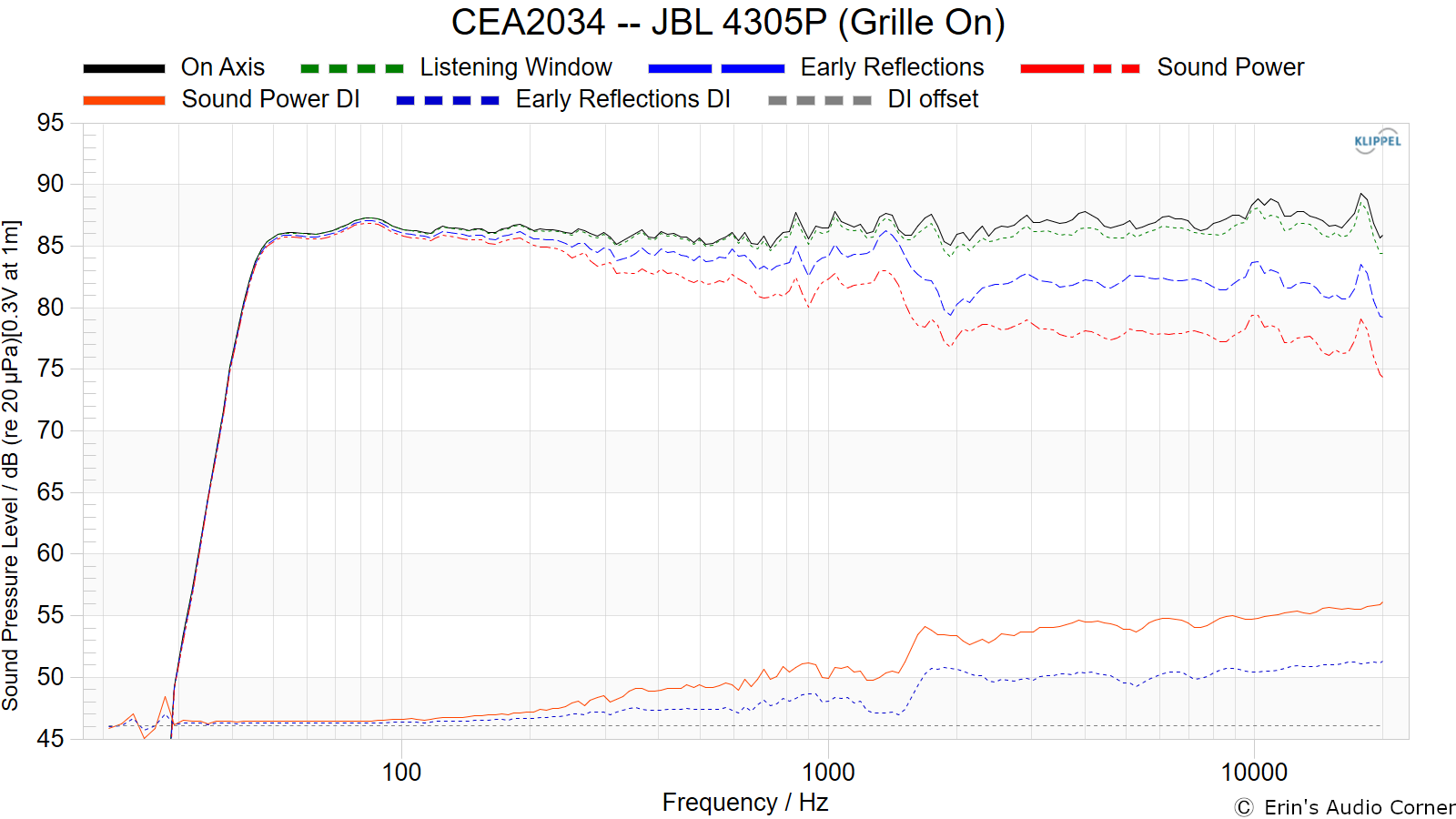
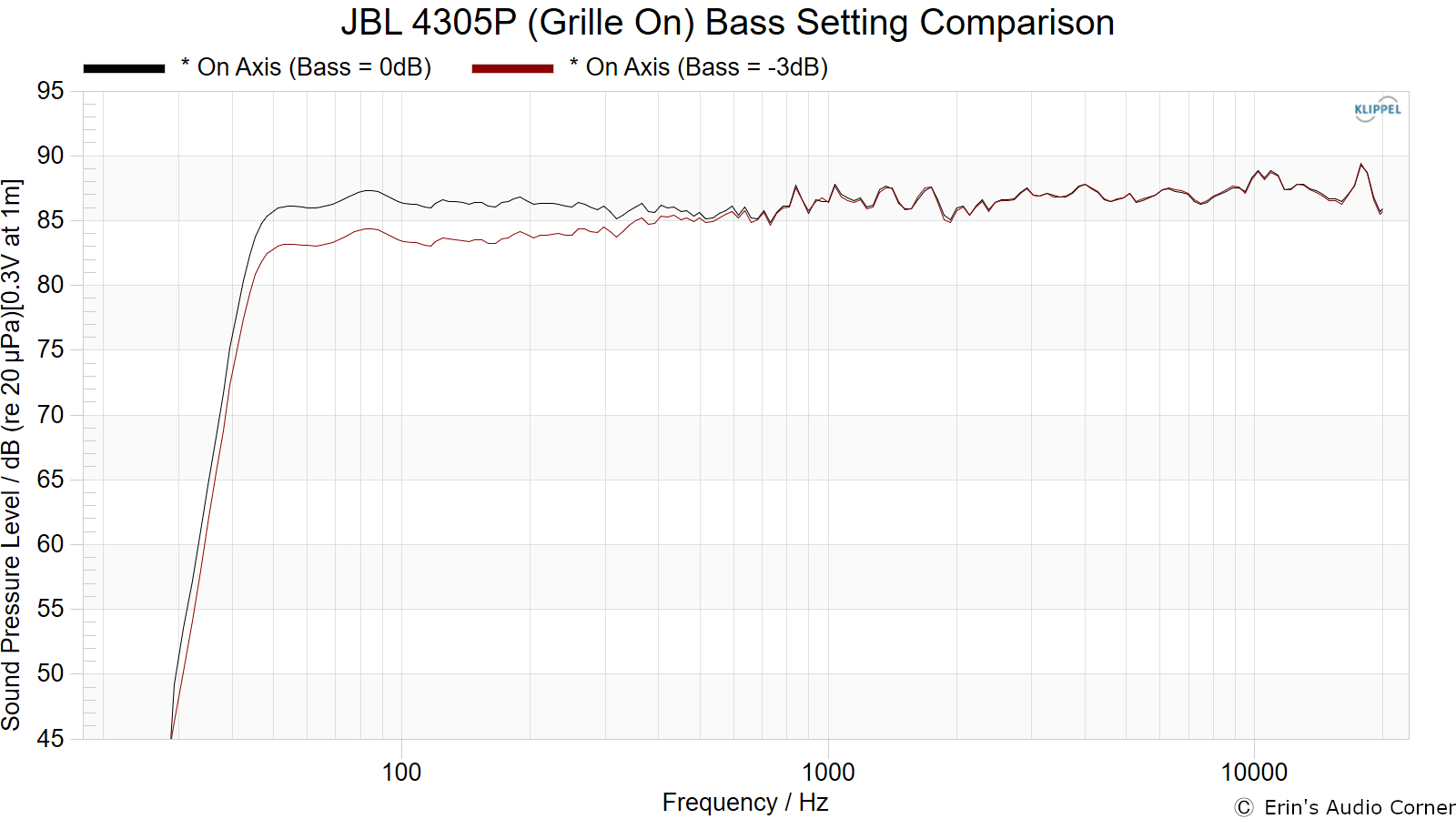
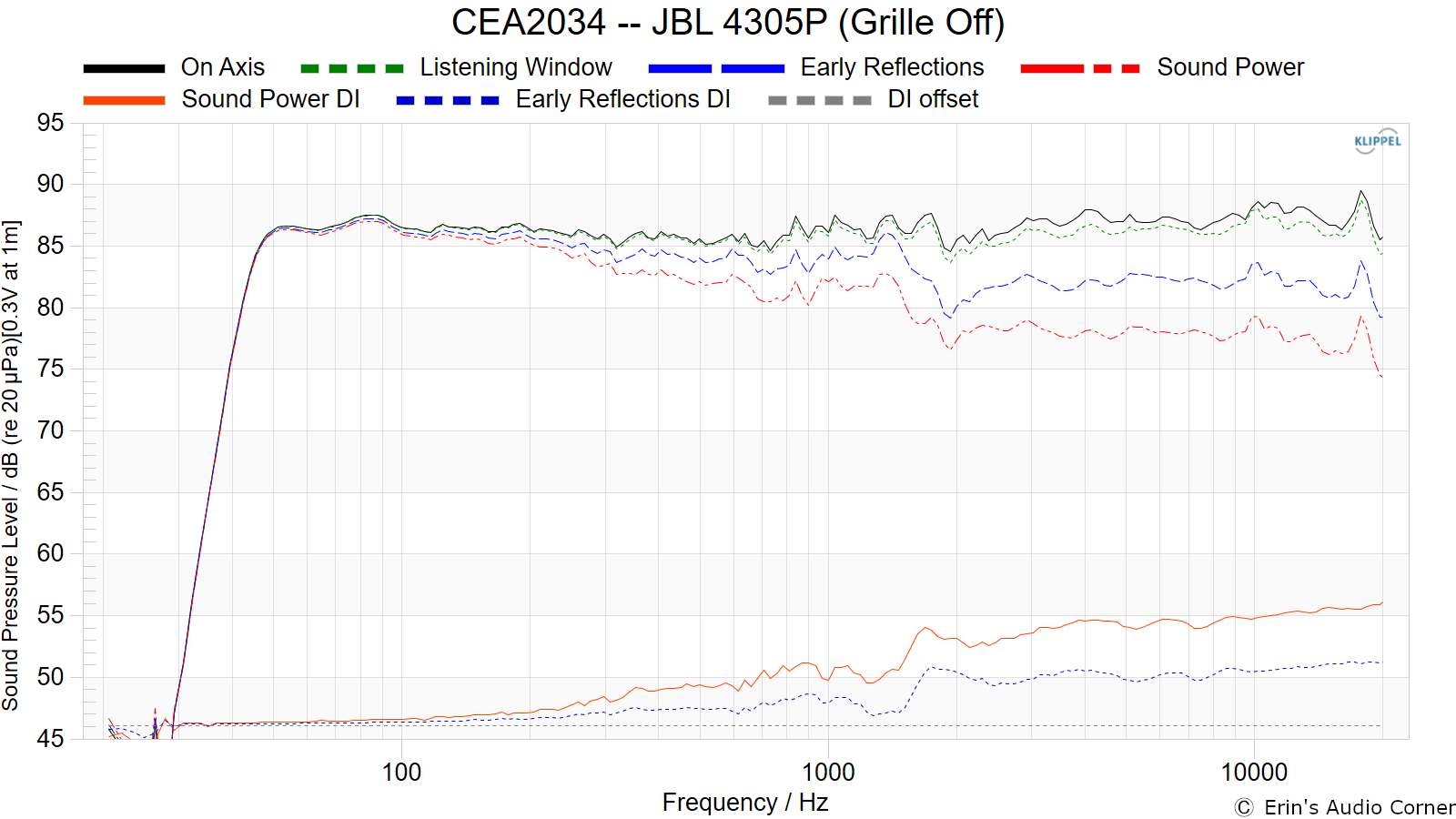
Early Reflections Breakout:
Floor bounce: average of 20º, 30º, 40º down
Ceiling bounce: average of 40º, 50º, 60º up
Front wall bounce: average of 0º, ± 10º, ± 20º, ± 30º horizontal
Side wall bounces: average of ± 40º, ± 50º, ± 60º, ± 70º, ± 80º horizontal
Rear wall bounces: average of 180º, ± 90º horizontal

Estimated In-Room Response:
In theory, with complete 360-degree anechoic data on a loudspeaker and sufficient acoustical and geometrical data on the listening room and its layout it would be possible to estimate with good precision what would be measured by an omnidirectional microphone located in the listening area of that room. By making some simplifying assumptions about the listening space, the data set described above permits a usefully accurate preview of how a given loudspeaker might perform in a typical domestic listening room. Obviously, there are no guarantees, because individual rooms can be acoustically aberrant. Sometimes rooms are excessively reflective (“live”) as happens in certain hot, humid climates, with certain styles of interior décor and in under-furnished rooms. Sometimes rooms are excessively “dead” as in other styles of décor and in some custom home theaters where acoustical treatment has been used excessively. This form of post processing is offered only as an estimate of what might happen in a domestic living space with carpet on the floor and a “normal” amount of seating, drapes and cabinetry.
For these limited circumstances it has been found that a usefully accurate Predicted In-Room (PIR) amplitude response, also known as a “room curve” is obtained by a weighted average consisting of 12 % listening window, 44 % early reflections and 44 % sound power. At very high frequencies errors can creep in because of excessive absorption, microphone directivity, and room geometry. These discrepancies are not considered to be of great importance.

Horizontal Frequency Response (0° to ±90°):

Vertical Frequency Response (0° to ±40°):

Horizontal Contour Plot (normalized):
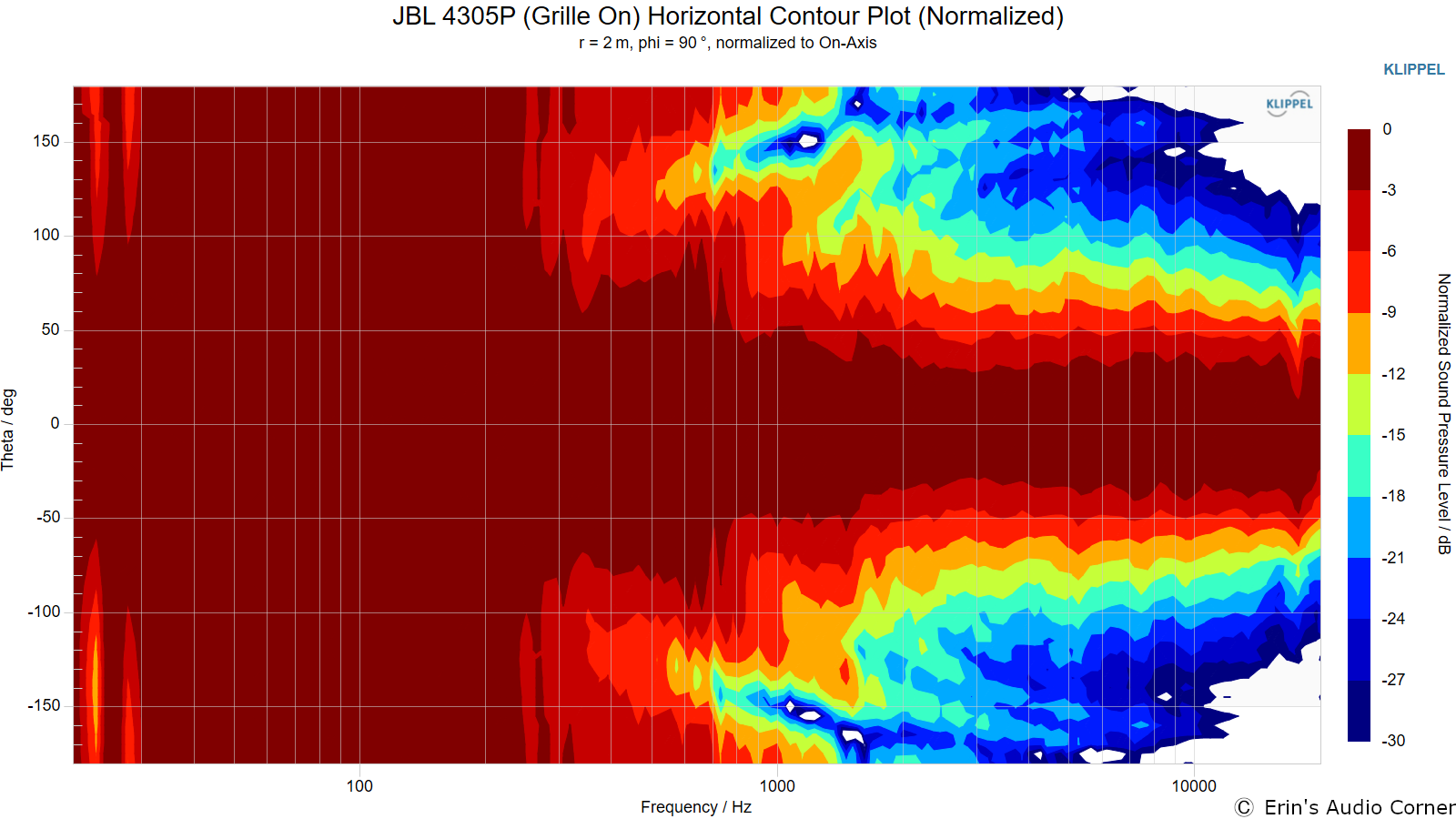
Vertical Contour Plot (normalized):
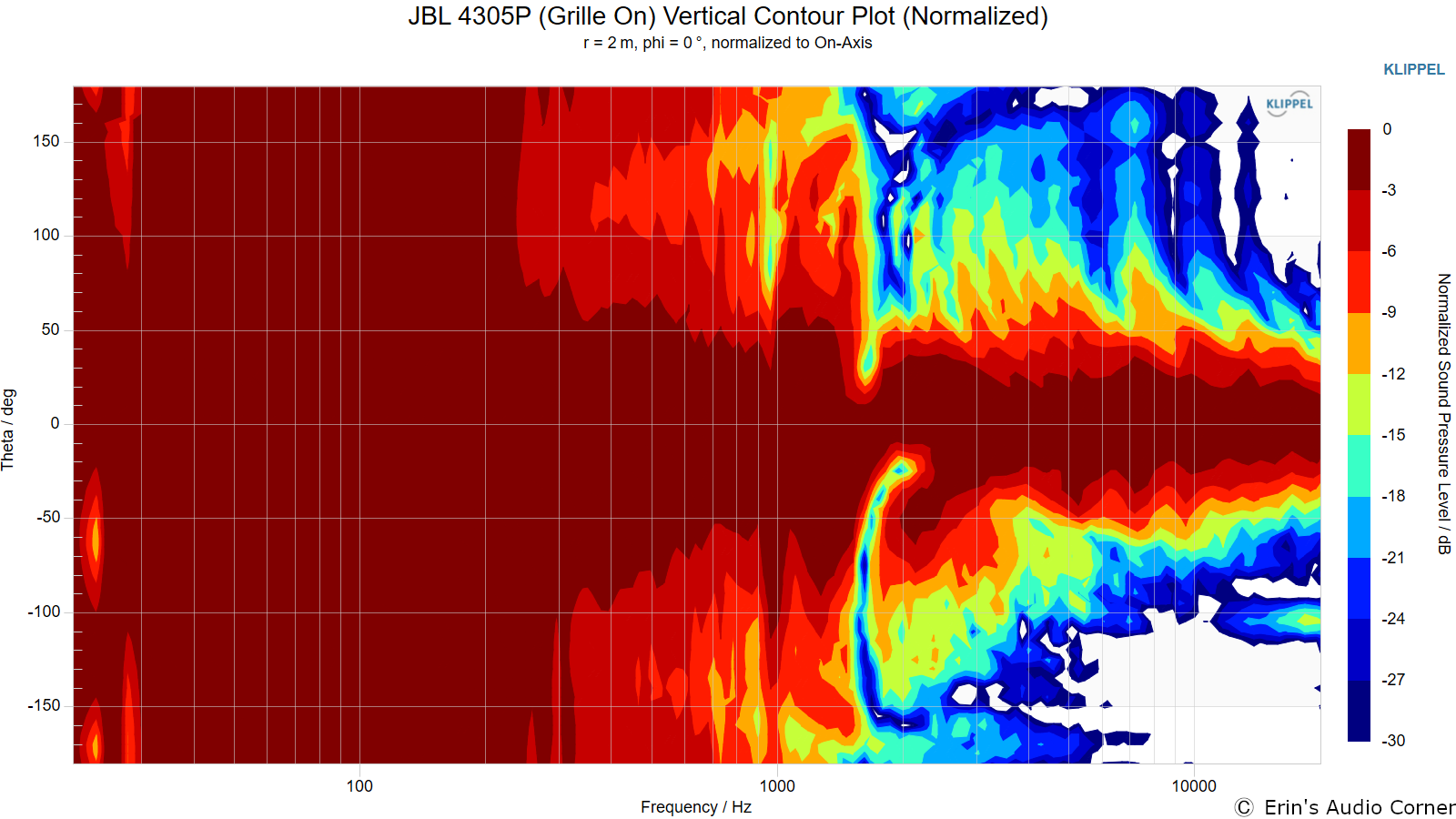
“Globe” Plots
Horizontal Polar (Globe) Plot:
This represents the sound field at 2 meters - above 200Hz - per the legend in the upper left.
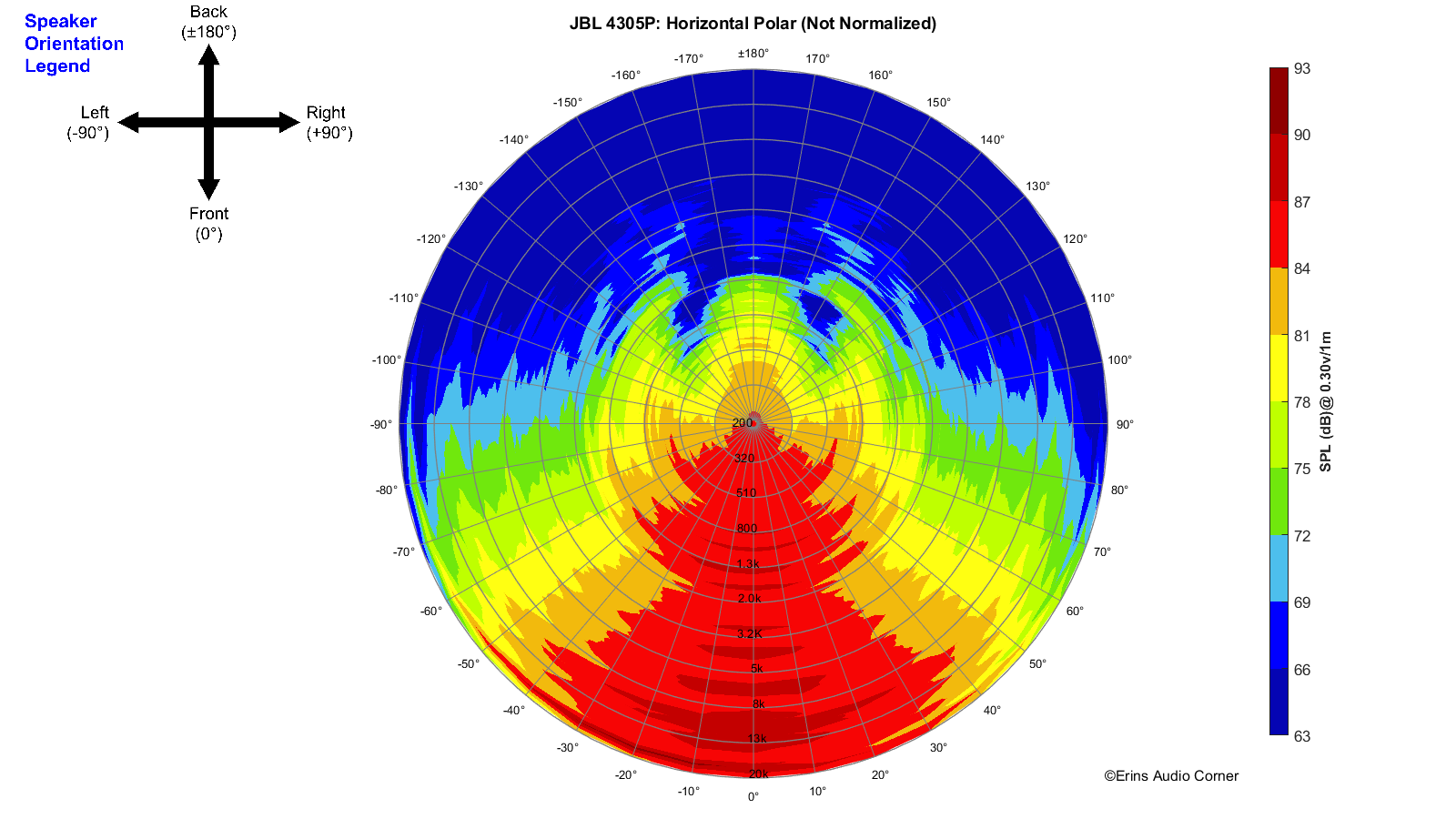
Vertical Polar (Globe) Plot:
This represents the sound field at 2 meters - above 200Hz - per the legend in the upper left.
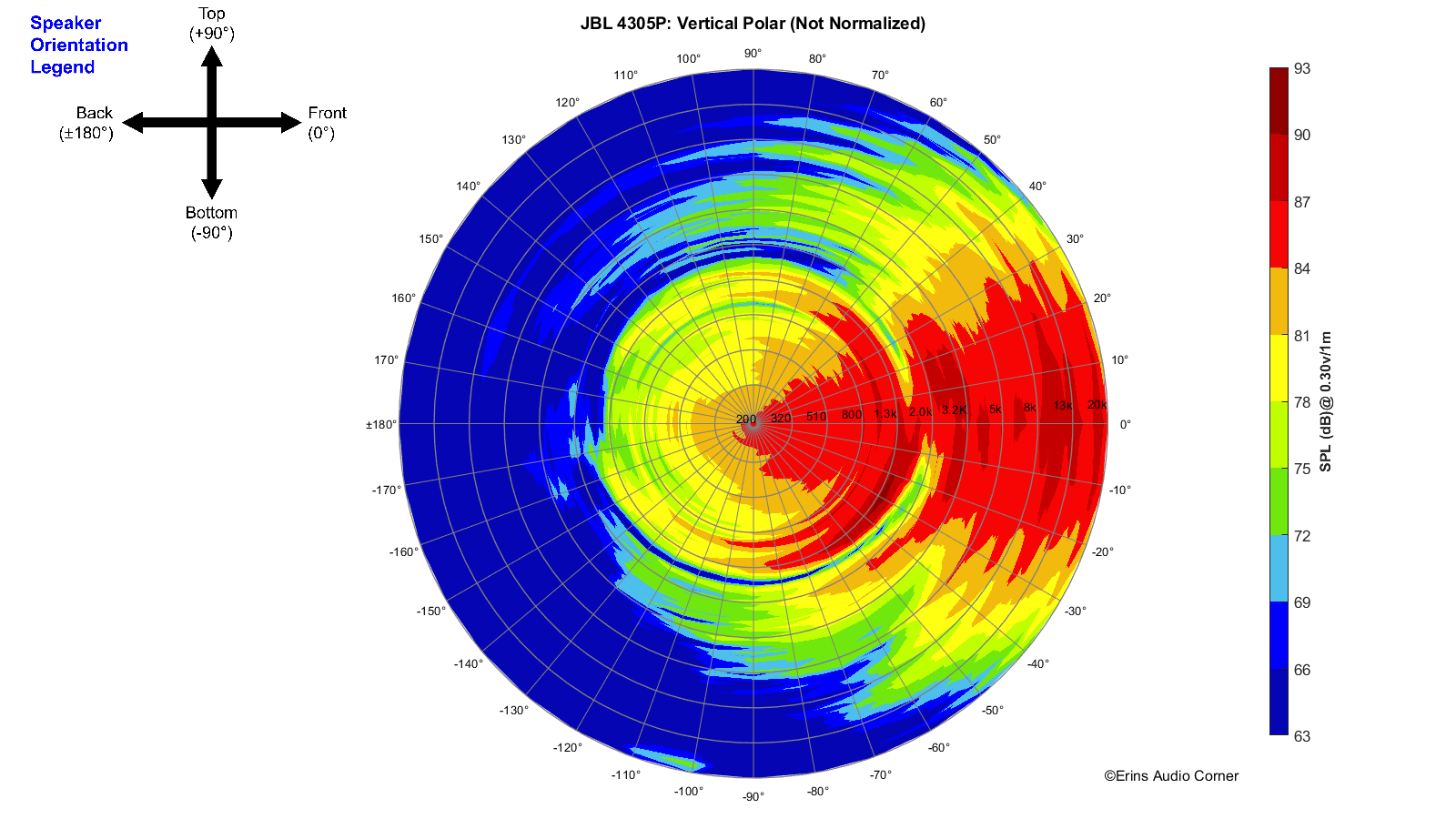
Additional Measurements
Response Linearity
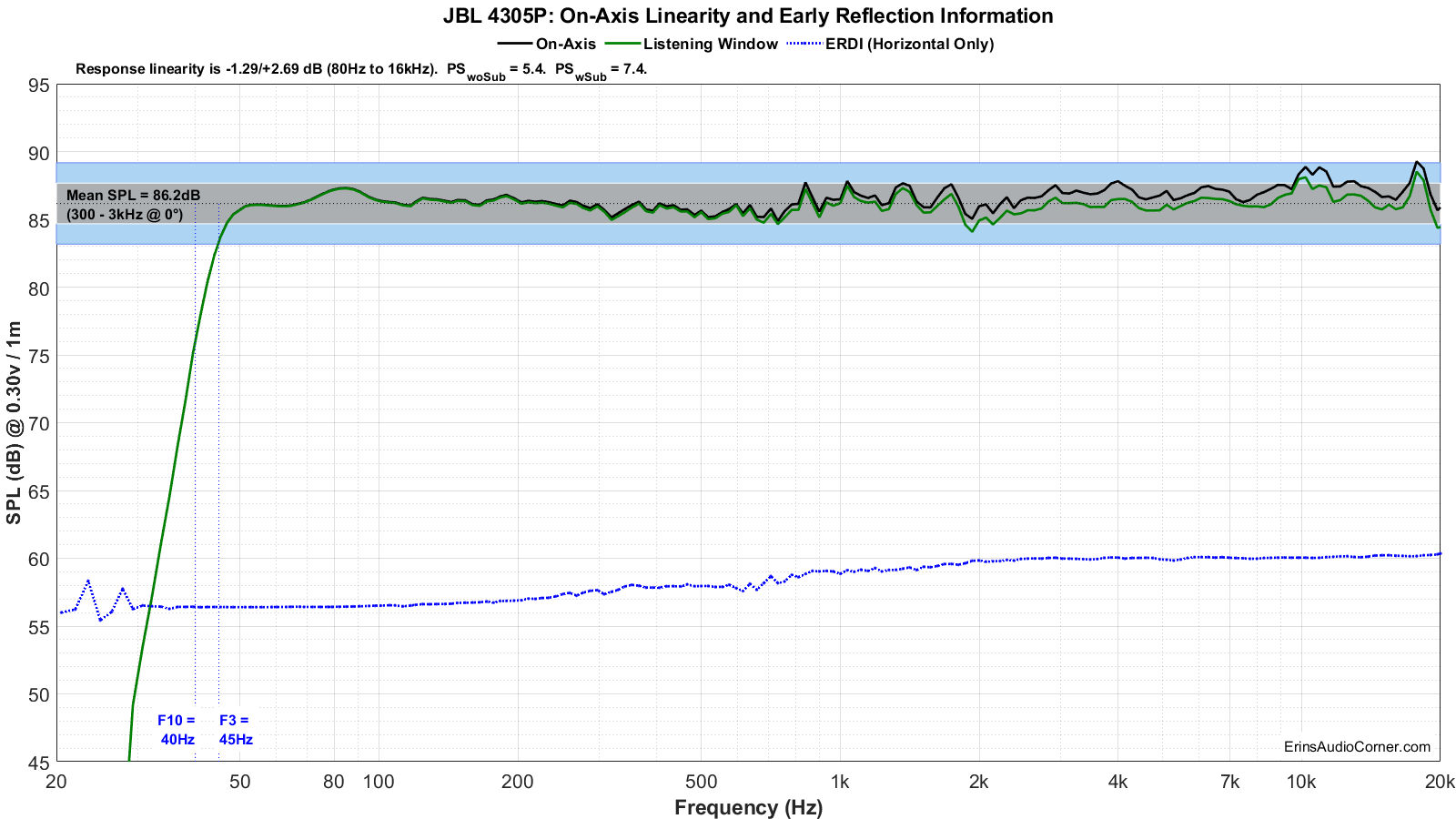
Step Response
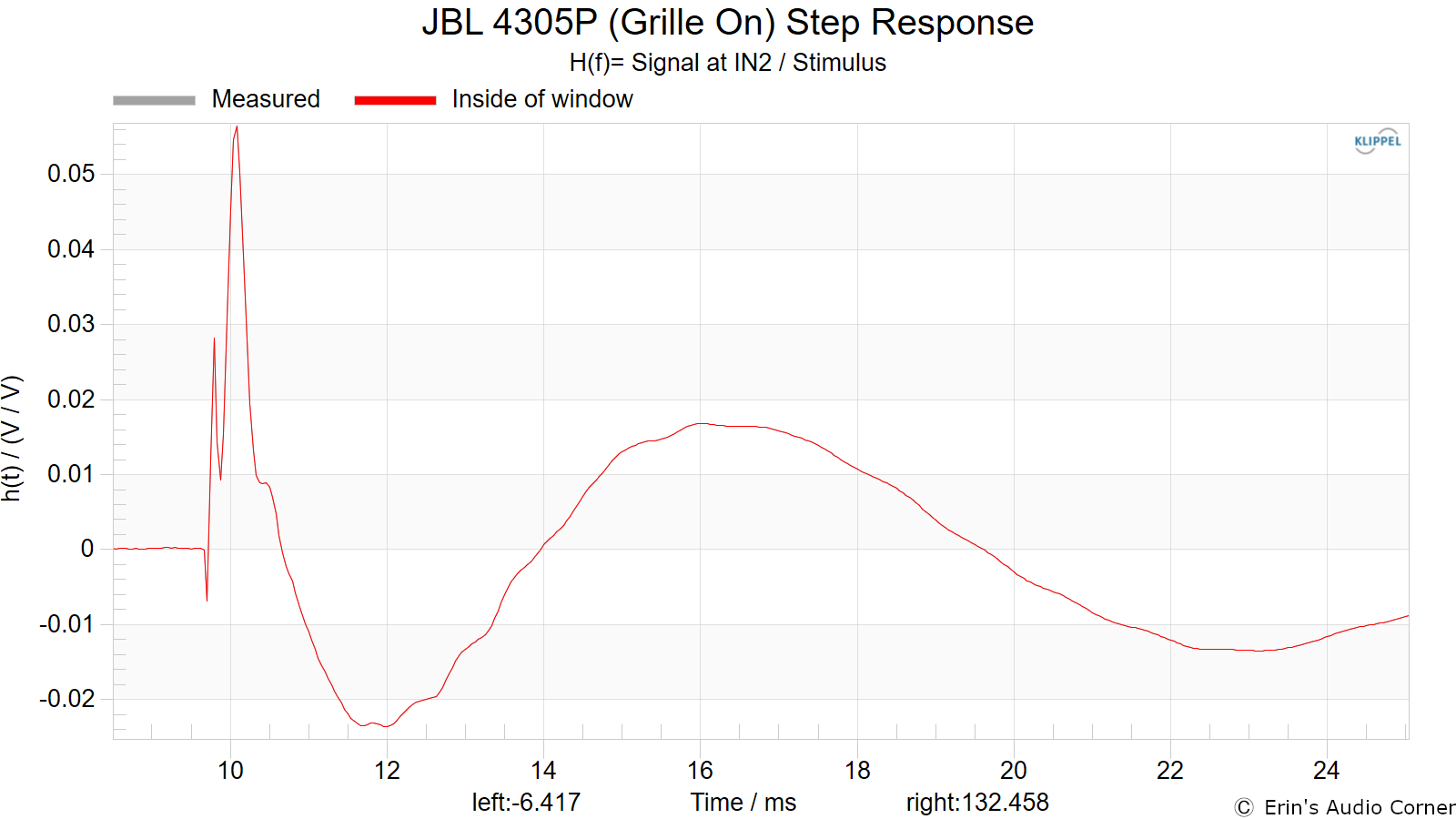
Group Delay
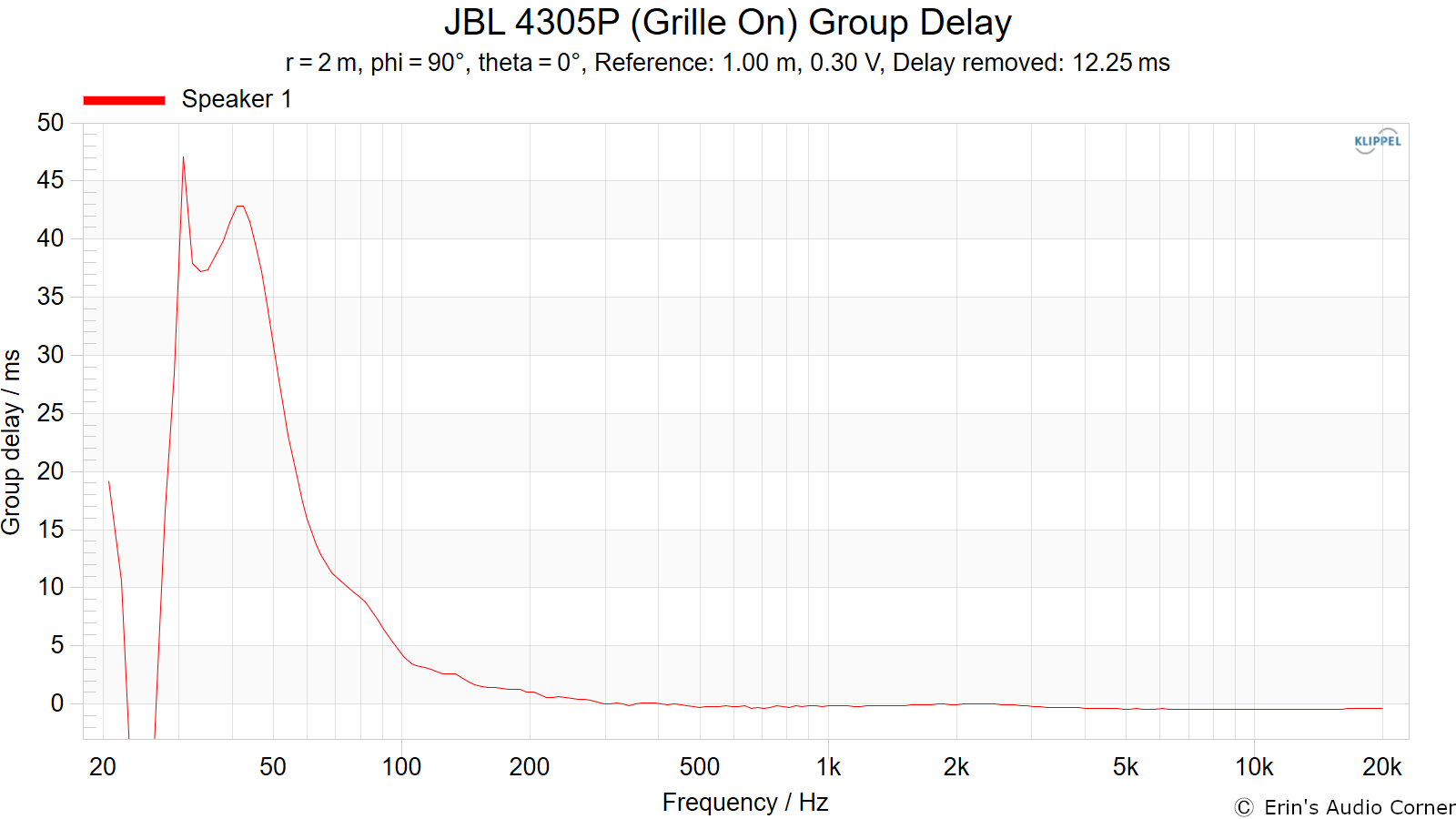
Harmonic Distortion
Harmonic Distortion at 86dB @ 1m:

Harmonic Distortion at 96dB @ 1m:
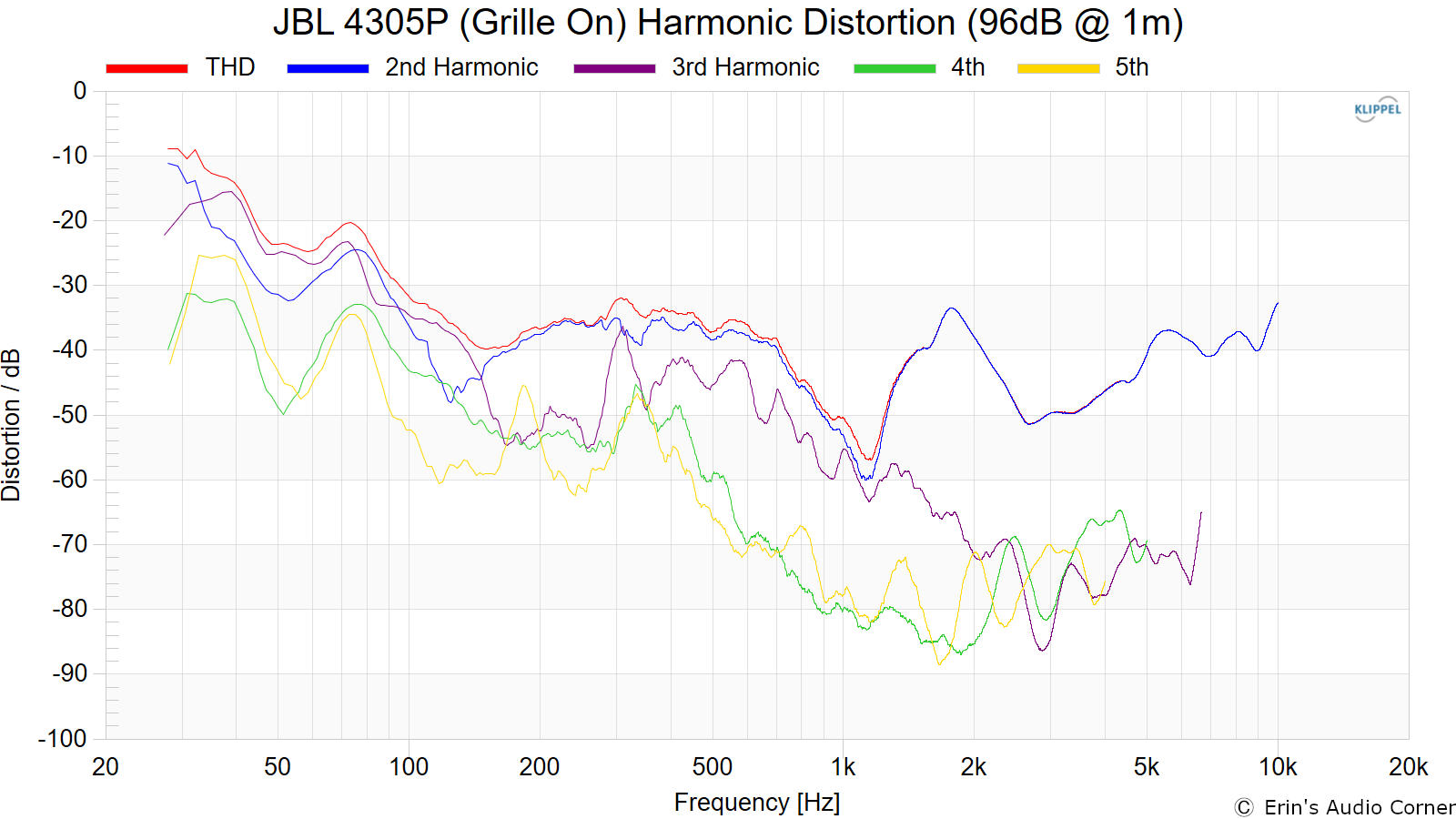
Dynamic Range (Instantaneous Compression Test)
The below graphic indicates just how much SPL is lost (compression) or gained (enhancement; usually due to distortion) when the speaker is played at higher output volumes instantly via a 2.7 second logarithmic sine sweep referenced to 76dB at 1 meter. The signals are played consecutively without any additional stimulus applied. Then normalized against the 76dB result.
The tests are conducted in this fashion:
- 76dB at 1 meter (baseline; black)
- 86dB at 1 meter (red)
- 96dB at 1 meter (blue)
- 102dB at 1 meter (purple)
The purpose of this test is to illustrate how much (if at all) the output changes as a speaker’s components temperature increases (i.e., voice coils, crossover components) instantaneously.
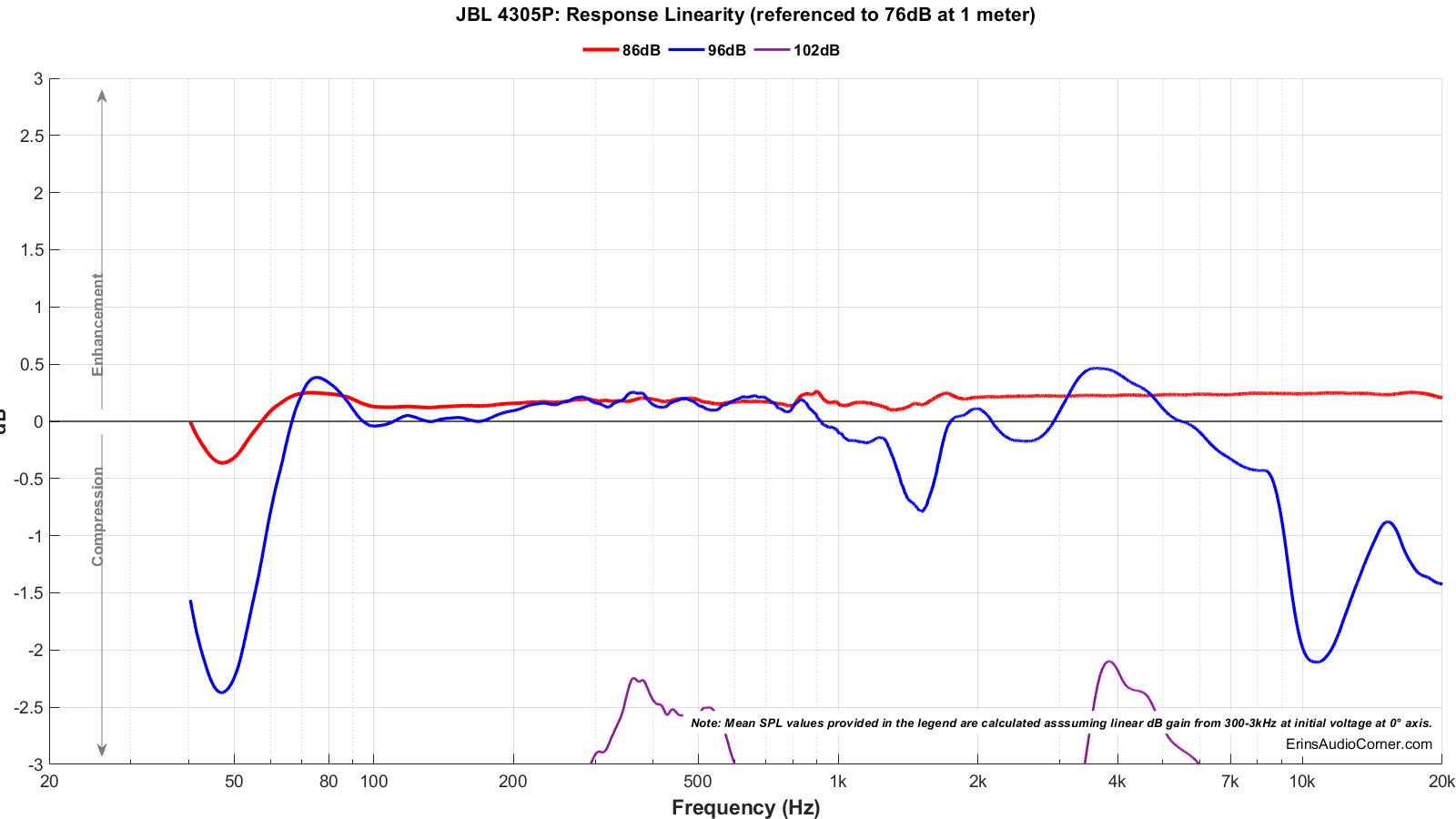
Wired vs Wireless Stereo Signal Delay
Below is a graphic illustrating that the IR of both speakers arrives at the same time and that there is no difference in their arrival when used in either wired or wireless mode.
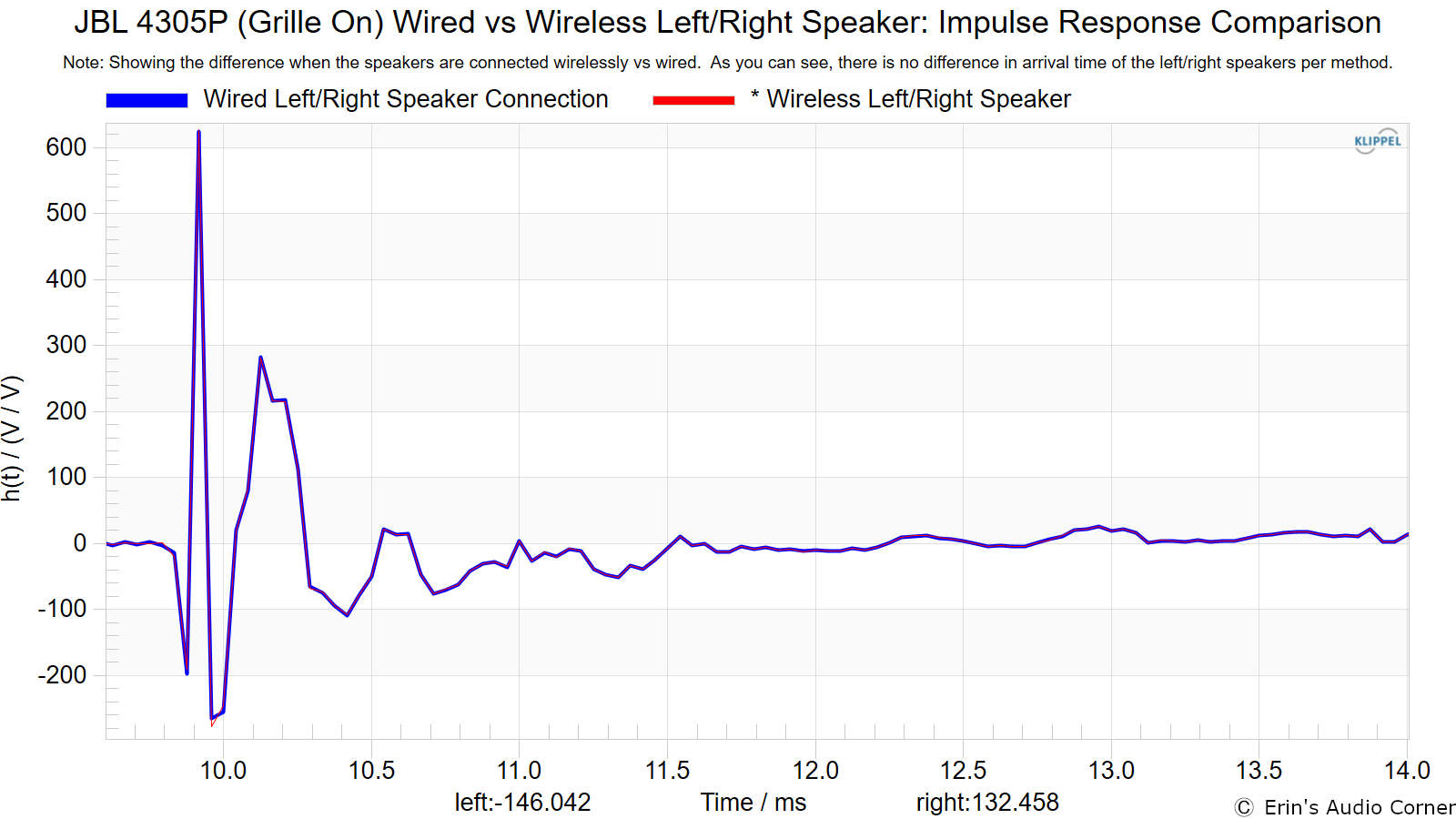
Parting / Random Thoughts
As stated in the Foreword, this written review is purposely a cliff’s notes version. No order; just some random notes from my listening. For details about the performance (objectively and subjectively) please watch the YouTube video. But a few notes:
- Listening at about 2 meters away. Using Motu M2 with Apple Music streaming source.
- Solid output down to 40Hz in room (though, a room resonance here is likely helping).
- No coloring of the vocals (otherwise would be due to cabinet resonance).
- Very neutral and well balanced sound.
- Precision imaging.
- John Mellencamp “Authority Song”: detailed vocal with dynamics as he sings his vocal goes soft to loud and it comes across very well on these speakers.
- Having just come from the Kef Reference 1 Meta, these don’t have the kind of soundstage that just entrenches you. Rather, the music is in front of you and not very layered.
- Soundstage sounds more symmetrical when turned about 10 degrees out. Rather than sounding a bit narrow and somewhat deep, the soundstage sounds wider and helps to draw a rectangle of sound rather than a square of sound (if that makes sense?). Going to 30 degrees toe-out was way too extreme and the soundstage didn’t hold well. I recommend trying 0-15 degrees for a sweet spot based on your preference.
- Joe Walsh “Rocky Mountain Way” is about a foot outside the speakers on the side when speakers are toed out 10 degrees.
- Non-fatiguing. I listened to these as my computer setup at low volume (about 70dB average) for over an hour and didn’t feel the need to get wax out of my ears.
- The speaker definitely uses a limiter to keep output volume in check. In-room max SPL was about 93dB (unweighted) at 2 meters. These aren’t going to provide you with extremely high output levels but have plenty to do the job in nearfield/midfield settings and at lower volumes from further distances.
- The only real measurement issue is the response around 1kHz. This is due - likely - to the waveguide portion of the baffle which sticks out beyond the woofer portion of the baffle. This cannot be EQ’d in the vertical plane but in the horizontal plane the directivity is nearly constant here so you can get away with some equalization to smooth this out if you desire. That said, I didn’t find it problematic in my listening. As long as you sit within ±5° vertically of the tweeter level you are OK. Beyond this and you’re going to experience less pleasing sound.
- I really don’t like the look of these speakers without the grille so I am very happy to see the grille creates no notable issues in the sound of the speaker (both to my ears and according to the data). The grille only covers the woofer anyway. This means - unlike most speakers - you can leave the grille on and enjoy the same sound quality you would if you had taken them off.
Support the Cause
If you find this review helpful and want to help support the cause there are a few ways you can do so below. Your support helps me pay for new items to test, hardware, miscellaneous items needed for testing and costs of the site’s server space and bandwidth. Any help is very much appreciated.
Join my Patreon: Become a Patron!
Or using my product affiliate link below to buy this speaker or anything they sell that you want to try out (I’d suggest maybe going with the “anything else” part). This will earn me a small commission at no additional cost to you. You can use these links anytime; now or in the future.
You can also join my Facebook and YouTube pages if you’d like to follow along with updates.